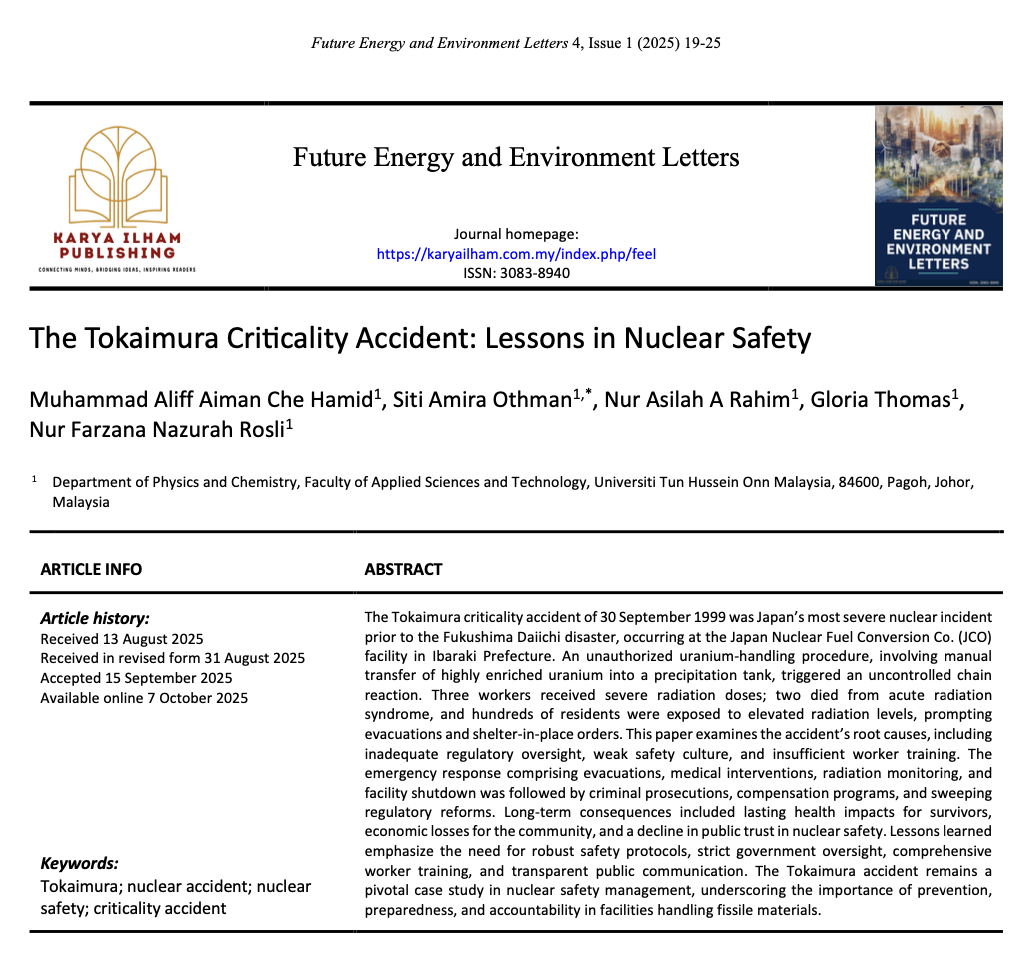The Tokaimura Criticality Accident: Lessons in Nuclear Safety
Keywords:
Tokaimura, nuclear accident, nuclear safety, criticality accidentAbstract
The Tokaimura criticality accident of 30 September 1999 was Japan’s most severe nuclear incident prior to the Fukushima Daiichi disaster, occurring at the Japan Nuclear Fuel Conversion Co. (JCO) facility in Ibaraki Prefecture. An unauthorized uranium-handling procedure, involving manual transfer of highly enriched uranium into a precipitation tank, triggered an uncontrolled chain reaction. Three workers received severe radiation doses; two died from acute radiation syndrome, and hundreds of residents were exposed to elevated radiation levels, prompting evacuations and shelter-in-place orders. This paper examines the accident’s root causes, including inadequate regulatory oversight, weak safety culture, and insufficient worker training. The emergency response comprising evacuations, medical interventions, radiation monitoring, and facility shutdown was followed by criminal prosecutions, compensation programs, and sweeping regulatory reforms. Long-term consequences included lasting health impacts for survivors, economic losses for the community, and a decline in public trust in nuclear safety. Lessons learned emphasize the need for robust safety protocols, strict government oversight, comprehensive worker training, and transparent public communication. The Tokaimura accident remains a pivotal case study in nuclear safety management, underscoring the importance of prevention, preparedness, and accountability in facilities handling fissile materials.







